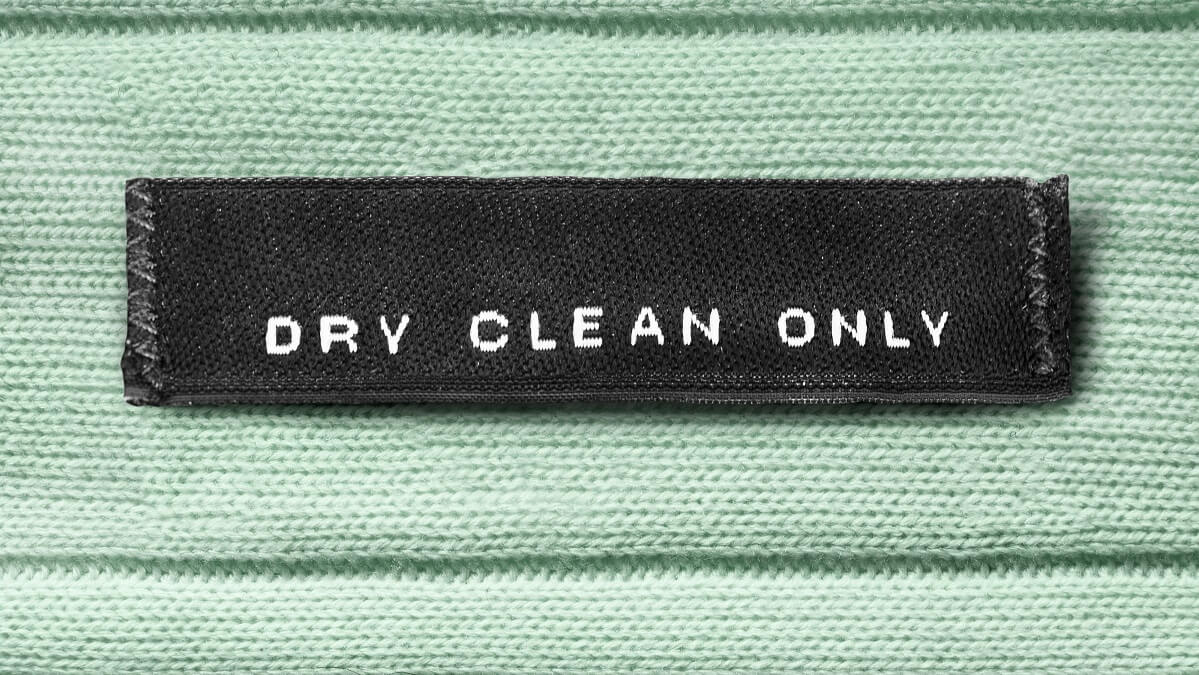Caring for your garments is essential from both a fashion and sustainability perspective. For some, this is as simple as machine washing and air drying, for others this means an expensive trip to the drycleaners.
For instructions on how to best care for our favourite items, we often refer to the tag. After reading ‘dry-clean only’ on a pair of now very muddy pants that my friend’s dog had taken a liking to, my heart sank. They were cotton, so I had assumed they’d be safe in a gentle handwash, if not in the washing machine.
National fashion editor at The Age Melissa Singer has questioned some big fish in the industry to get to the bottom of the instructions debacle.
“It’s hard to tell if the manufacturers care label is inaccurate because all fabrics behave differently; you can’t assume all silk garments are dry-clean only or that all cottons are handwash,” said Alexandra and Genevieve Smart from Ginger and Smart.
Their fabrics are meticulously tested before the care instructions are written, ensuring accuracy. “We suggest cold handwashing where possible. Dry-cleaning can be necessary for some fabrics, but there are some excellent green drycleaners now using less harmful chemicals.”
Helen O’Conner of Thurley admits to washing 90 per cent of her garments labelled with ‘dry-clean only’ instructions. “I think it’s integral to have some fabric knowledge if you are going against the care label and it is at your own risk,” she warns. “But almost every fibre is washable and won’t be damaged if you are careful.” She recommends handwashing items in cold water using a gentle detergent.
You should always be cautious with your favourite garments, and dry-cleaning is recommended if specified in the instructions. However, there are some general rules that can help you decide for yourself which items do need special treatment, and which have had the ‘dry-clean only’ label slapped on to cover the manufacturer. This is also useful if the label has faded or been torn off.
Cotton rarely has to be dry-cleaned. In fact, you can often wash cotton items on a cold or warm cycle in the washing machine. Synthetic fabrics including nylon, spandex, acrylic, acetate and polyester can also be washed in the machine. They won’t shrink either, so they can be washed in warm water, though it’s best not to put them in the clothes dryer.
Rayon is semisynthetic and is temperamental when washing. It loses shape, bleeds and shrinks easily. While it’s best to dry-clean garments made from rayon, you can also gently handwash them in cold water with a mild detergent, though it’s not recommended. Silk is similar, and while it’s a durable fabric, the dyes used in silk a prone to bleeding, so dry-cleaning is usually an easier option than handwashing.
Wool shrinks easily, so needs to be handwashed in cold water when dry cleaning is not an option. It’s best to lay wool down to air dry and hanging can cause items to stretch. While it’s best to dry-clean linen, you can also hand wash it in cold water and allow to air dry. Ironing on a low heat is often required.
Do you always follow the care instructions on your clothing? Do you have any care advice to share with other readers?
Also read: How to iron clothes without ironing

